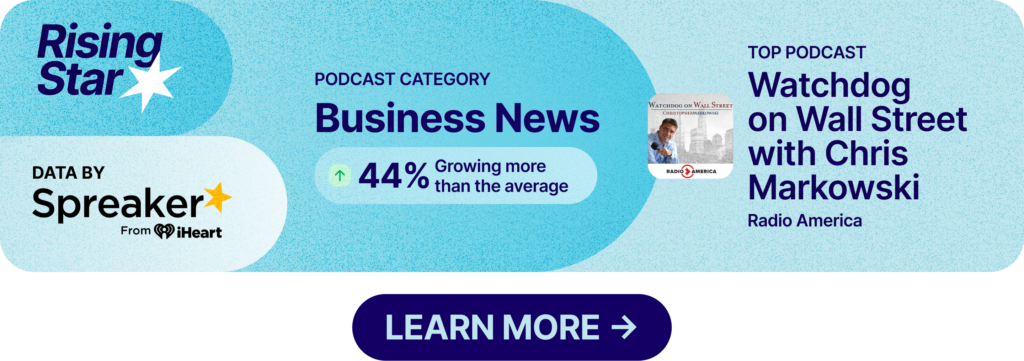Today in the Business of Podcasting
Spoken word audio report (NPR / Edison Research): Record high consumption; podcast share growing; AM/FM unbeatable in the car by Brad Hill
It’s time to look at the fifth annual Spoken Word Audio Report, built from a nationwide survey of over 4,100 people aged 13 and up. 48% of respondents listen to spoken word audio in some form on a daily basis, an increase of two percentage points from last year. For the first time in the study’s history, mobile devices have overtaken AM/FM radio receivers as the top way people listen to spoken word content on a daily basis, this year scoring 39% and 35% respectively. Podcasts have now grown to over a third of daily time spent listening to spoken word at 36%. When respondents are listening at home, that podcast percentage jumps to 40%. [Source]
As the strikes end and Hollywood gets back to business, what happens next for advertisers and ad buyers? by Kristina Monllos
As of last Wednesday night, SAG-AFTRA has reached a tentative agreement with the AMPTP and the long-running actor’s strike is over. Suddenly the advertising world once again has the ability to use talent when promoting projects. One potential knock-on effect of the strike for advertisers is the availability of reality-based content, as shown by reality TV’s boom in the late 2000s and early 2010s from the sudden injection of ad dollars during the 2007 WGA strike. Buyers interviewed by Digiday anticipate a wait-and-see response to how media mixes might change once TV and film returns to baseline content production. [Source]
Americans to brands: look inward before weighing in on politics by Alyssa Meyers
A new report from Morning Consult shows 53% of Americans surveyed agree corporations shouldn’t involve themselves in political and/or cultural issues, echoing sentiment from 2020. The ‘Election Playbook’ study, built of surveys conducted from 2019 to 2023, Brand political expectations do skew younger. 41% of GenZ and millennials respondents feel brands should use their influence to impact political and/or cultural issues, and only 39% believe corporations shouldn’t get involved with political or cultural issues. Podcasting’s audience is largely millennial and gen Z listeners, making it a logical bet for brands looking to dip their toes into politically-charged campaigns this election season. [Source]
How I got 10x YouTube subscribers by adding video to my podcast by Ashley Hamer
Ashley Hamer, managing editor at Descript, reports her results on adding video content to her podcast Taboo Science. From early 2022 through March of this year, the podcast auto-posted to YouTube in the form of audiograms with a static image of the show art, plateauing around 30 subscribers. After fully incorporating filming and editing video into the standard Taboo Science episode workflow and optimizing the YouTube channel with proper SEO, thumbnails, and regular uploads, the subscriber count climbed from 24 to 370 over four months. While there’s an entire industry in guessing how to appease the YouTube recommendation algorithm, evidence (including Hamer’s efforts) shows running a video podcast like a YouTube channel, with regular uploads of visually-engaging content, will lead to the algorithm picking up the channel more often and recommending videos to new viewers. [Source]
…as for the rest of the news: SoundStack hires digital audio vet Michael Fischer, the nomination deadline for The Ambies is November 17th, Spooler has launched a map tool allowing podcasters to mark locations mentioned in a podcast on an embeddable map, The Podcast Marketing Academy has published a new marketing trends report, Spotify has revamped their connected TV app with more features and a UI similar to the desktop and mobile versions.
Research Database Snapshot
What it says: The top factors for ad buyers when considering a podcast publisher
What it means: Above all else, ad creative is the biggest driver for potential buyers
Why it’s cool: Podcasters work very hard to make 90% of their audio the best it can be – applying that same discipline to the other 10% – the ads – can be a competitive advantage








































































































































































































